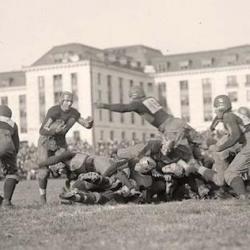Catherine Pickstock claims that the rejection of liturgy is central to modernity. Having refused the integrations of liturgy, modernity forges various forms of pseudo-liturgy, pale substitutes to accomplish what the liturgy once did in Western society.
One of these pseudo-liturgies is civility: “Once the common ritual basis in which the symbolic order is mediated through subjectivity has collapsed, one has to do something to prevent total intersubjective misunderstanding and conflict. Instead of ritual bonds, which presupposed a shared horizon of substantive conviction, one must substitute codes of civility or good manners which assume only a formal agreement about accepted protocols.”
Linking civility with Cartesian mathesis, she describes manners as “a kind of method.”
With manners comes the possibility of dissembling, of wearing a face to meet the faces. Pickstock argues that the “liturgy cannot possibly deceive. If the priest at the Mass secretly denies what he is doing, it does not matter. He has still performed his representative function, and the truth of the Mass remains.”
There is no such guarantee with the signs of civility:”with the emergence of civility in the Renaissance, there already emerged the pervasive problem of dissembling. A symbol had now ceased to be an unalterable event, and had instead turned into a sign that might or might not be reliable; this rupture between sign and reality was also given theological encouragement by the voluntarist assumption that all links and connections are simply arbitrary divine impositions.”
The contrast is too stark: Manners can be an extension of liturgical practice into everyday life. At the same time, it’s true that obsession with civility arose when the Mass ceased to be a unifying rite, a rite that unified even in the midst of intense conflict. Fragmented at the center, Western civilization had to find ways to compensate.
(Pickstock, “Liturgy, Art, and Politics,” Modern Theology 16:2 [2000]: 159-80).














